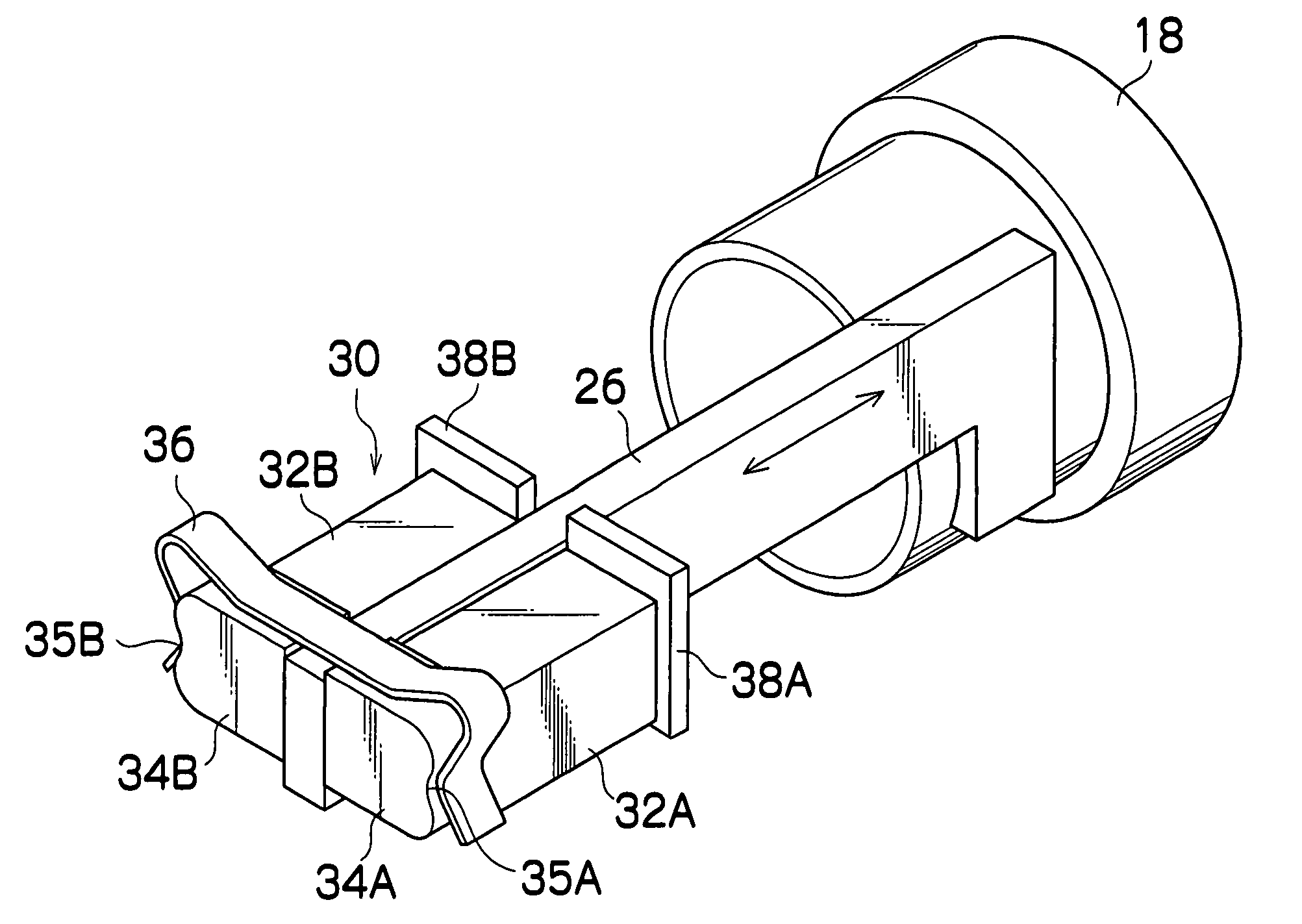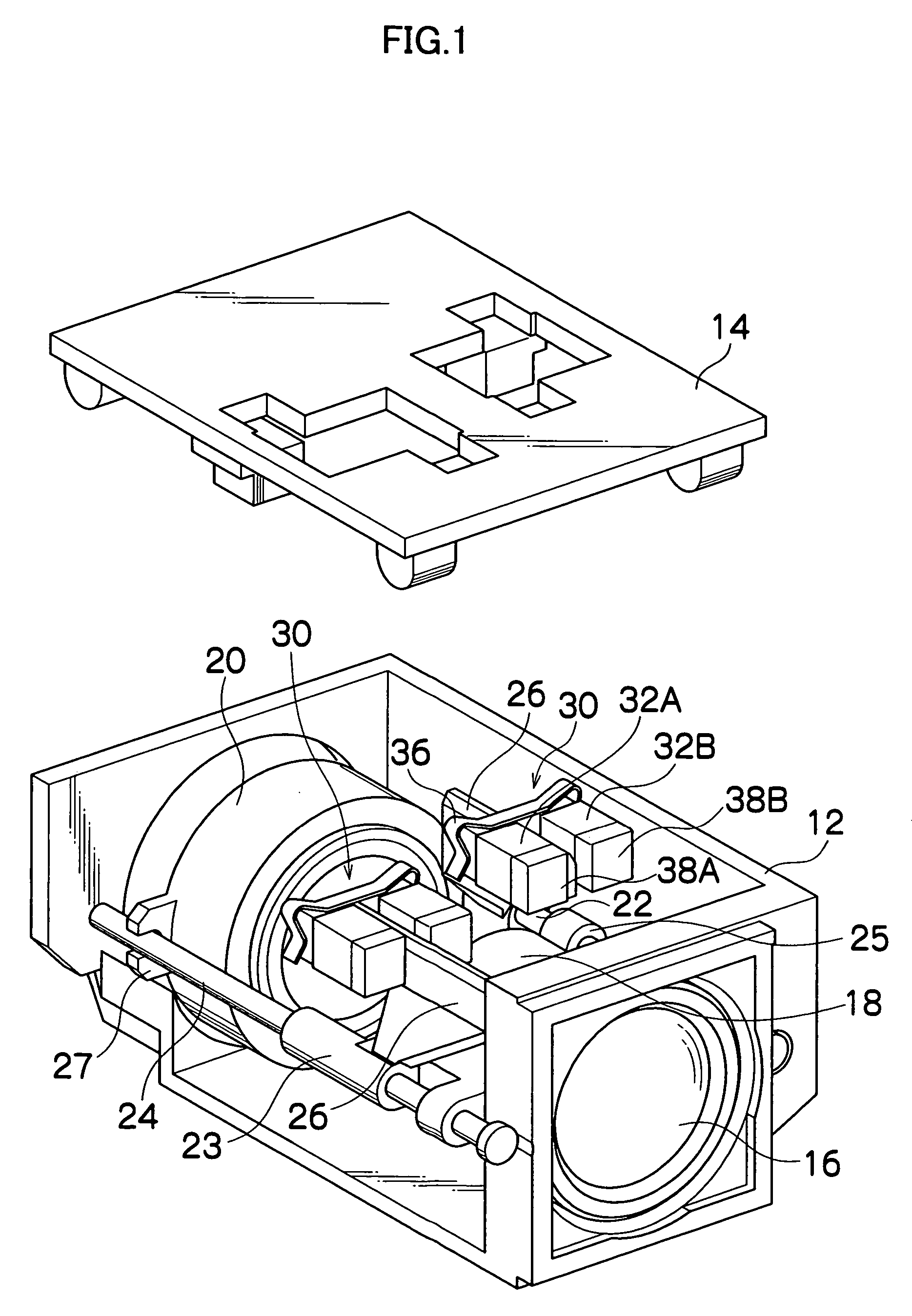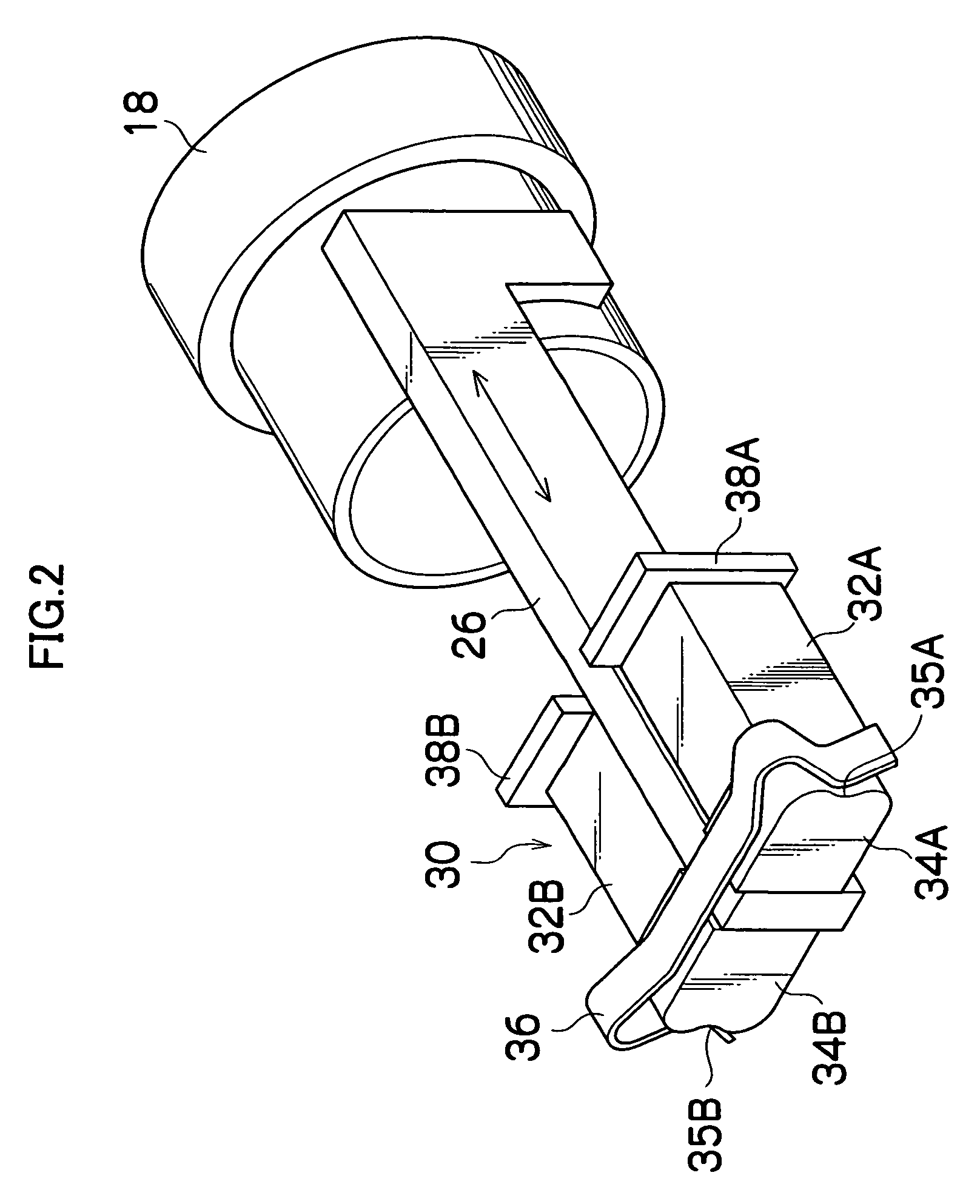Actuator and its control method and lens device
a technology of actuator and control method, applied in piezoelectric/electrostrictive/magnetostrictive devices, mountings, instruments, etc., can solve the problems of large attenuation rate, unfavorable responsiveness of the lens-barrel, and inability to accurately move the lens-barrel, etc., to achieve accurate movement, accurate movement, accurate movement
- Summary
- Abstract
- Description
- Claims
- Application Information
AI Technical Summary
Benefits of technology
Problems solved by technology
Method used
Image
Examples
first embodiment
[0076]FIG. 1 is a perspective view showing a construction of the lens device to which an actuator of a first embodiment is applied. The lens device shown in the drawing has a box-shaped case constituted of a case body 12 and a lid 14, and a fixed lens 16 is mounted to a side surface of the case body 12.
[0077] Two lens frames 18 and 20 are provided inside the case body 12, and movable lenses such as a zoom lens and focus lens are held in these two lens frames 18 and 20. The two lens frames 18 and 20 are supported slidably in an optical axis direction by two guide rods 22 and 24 placed parallel with the optical axis of the fixed lens 16. Namely, a guide part 23 is formed to project on the outer peripheral surface of the lens frame 18. The guide rod 24 is inserted through a through-hole of this guide part 23 and guided, and the guide rod 22 is engaged in a U-shaped groove of an engagement part (not shown) formed to project on an opposite side from the guide part 23, whereby the lens fr...
second embodiment
[0098] Next, an operation of the actuator of the second embodiment will be explained.
[0099] A comparative example in which voltage is applied to the piezoelectric elements 32A and 32B of the actuator 30 shown in FIGS. 1 and 2 in the substantially sawtooth shapes shown in FIG. 4A and FIG. 4B will be explained hereinafter.
[0100] In the case of FIG. 4A, the driving pulses in the same shape, namely, the substantially sawtooth-shaped driving pulses which gradually rise from the time β1 to the time β2, and abruptly falls at the time β3 are applied to the piezoelectric elements 32A and 32B. Accordingly, at the time β3, the piezoelectric elements 32A and 32B abruptly contract in the same timing.
[0101] Likewise, in the case of FIG. 4B, the driving pulses in the same shape, namely, the substantially sawtooth-shaped driving pulses which gradually fall from the time β4 to the time β5, and abruptly rise at the time β6 are applied to the piezoelectric elements 32A and 323B. Accordingly, at the ...
third embodiment
[0110] Next, an actuator of a third embodiment will be explained.
[0111]FIG. 11 is a perspective view showing a construction of a lens device to which the actuator of the third embodiment is applied. The lens device shown in the drawing has a box-shaped case 112, and a lens frame 118 which holds a movable lens (for example, a zoom lens and a focus lens) 116 is provided inside this case 112.
[0112] An engaging part 122 and a guide part 124 are formed to project on an outer peripheral surface of the lens frame 118. A U-shaped groove 123 is formed in the engaging part 122 and a guide rod 128 is engaged in this groove 123. A through-hole 125 is formed in the guide part 124, and a guide rod 129 is inserted through the through-hole 125. The guide rods 128 and 129 are placed in the optical axis direction, and are fixed to the case 112. Thereby, the lens frame 118 is supported slidably in the optical axis direction.
[0113] A driven member 126 is integrally mounted to the lens frame 118. The ...
PUM
 Login to View More
Login to View More Abstract
Description
Claims
Application Information
 Login to View More
Login to View More - R&D
- Intellectual Property
- Life Sciences
- Materials
- Tech Scout
- Unparalleled Data Quality
- Higher Quality Content
- 60% Fewer Hallucinations
Browse by: Latest US Patents, China's latest patents, Technical Efficacy Thesaurus, Application Domain, Technology Topic, Popular Technical Reports.
© 2025 PatSnap. All rights reserved.Legal|Privacy policy|Modern Slavery Act Transparency Statement|Sitemap|About US| Contact US: help@patsnap.com



